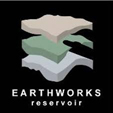
De-risking Seismic Amplitude Interpretation by 3D Seismic Volume Detuning
Amplitude maps extracted as horizon attributes from 3D seismic are important tools in exploration, appraisal and field development in many geological environments around the world. Geophysics and rock physics help us to relate seismic amplitude maps to many physical properties important in exploration and production, including changes in lithology, porosity and the presence of hydrocarbons, especially gas. However, amplitudes derived from seismic data are also affected by tuning, whereby the amplitude also responds to reservoir thickness changes independently of any lateral property change in the reservoir properties.
Thickness related tuning can easily double amplitudes in seismic, often being the cause of significant reflector brightening in seismic data. By comparison, even a very strong gas saturation effect in a soft sand reservoir may only change amplitudes by 25%.
Thickness related tuning is well understood in geophysics, but the basic principle of removing tuning effects from amplitude maps is not widely applied. Detuned amplitudes can also be used for computing seismic net pay. However, published methods are based on detuning of maps extracted from seismic.
A new and novel technique has been developed which directly detunes the 3D seismic traces themselves. The advantages of direct detuning of 3D seismic volumes include the ability to investigate the whole trace amplitude response (not just a window or extraction), generation of tuning curves without seismic data picking, rapid updating and modification of parameters and improved stratigraphic and quantitative interpretation.
The method is demonstrated on several real world datasets and results from a number of different geological scenarios are highlighted. These include detuning the seismic response from a UKCS Southern Gas Basin Rotliegend/Carboniferous target and a CNS target which includes Jurassic, Zechstein and Rotliegend reservoir intervals. A contrasting example from the Sea Lion Field, North Falkland Islands Basin will also be shown.
KeyFacts Energy Industry Directory: Earthworks
 KEYFACT Energy
KEYFACT Energy